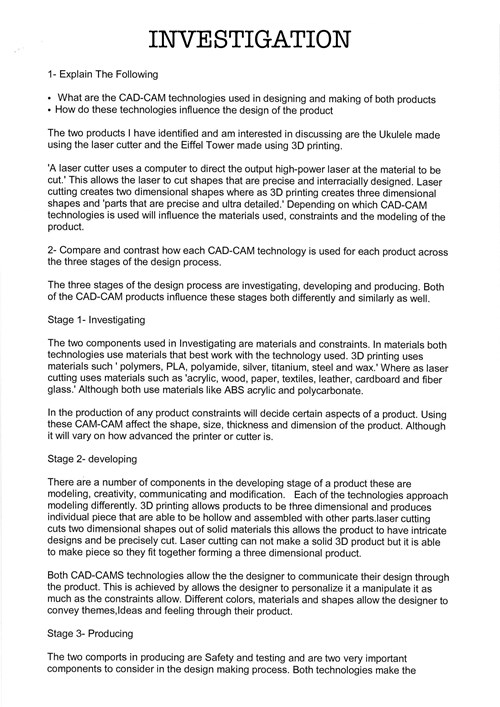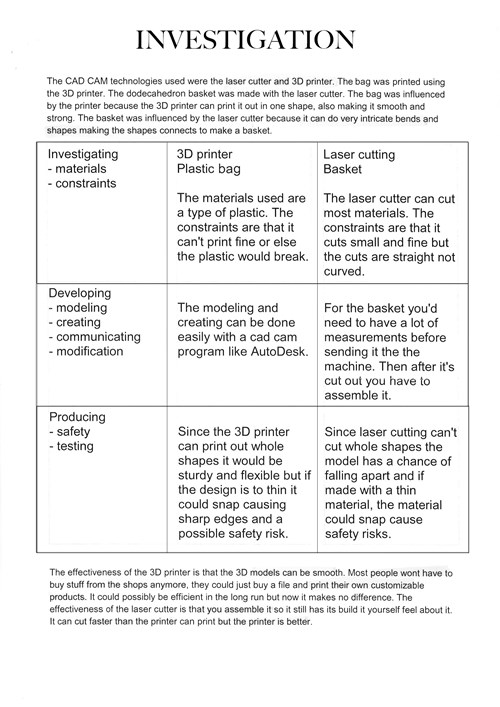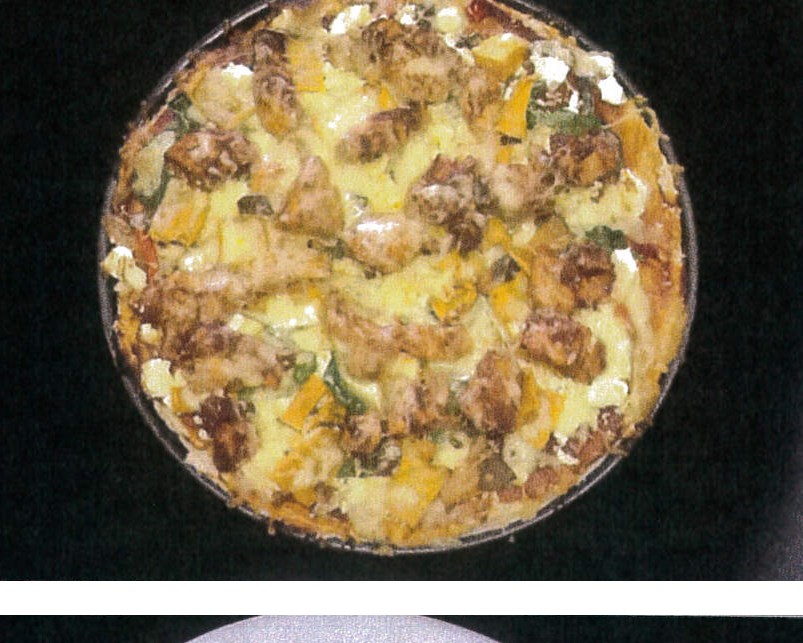- Home
- Resources
- Work samples
- Samples
- Design project: Mini torch - ABOVE
Design and Technologies
Years 9 and 10
Above satisfactory
Design project: Mini torch
Summary of task
Students designed and produced a working prototype of a mini torch case using CAD-CAM and a control system. They investigated CAD-CAM technologies and rapid prototyping systems. Students investigated the characteristics and properties of electronics and how the torch could be engineered to operate in three states. The design development process was documented following the Design and Technologies processes and production skills strand.
The focus of this task was to design and produce a product for the technologies contexts materials and technologies specialisations and engineering principles and systems.
Achievement standard
By the end of Year 10, students explain how people working in design and technologies occupations consider factors that impact on design decisions and the technologies used to produce products, services and environments. They identify the changes necessary to designed solutions to realise preferred futures they have described. When producing designed solutions for identified needs or opportunities, students evaluate the features of technologies and their appropriateness for purpose for one or more of the technologies contexts.
Students create designed solutions for one or more of the technologies contexts based on a critical evaluation of needs or opportunities. They establish detailed criteria for success, including sustainability considerations, and use these to evaluate their ideas and designed solutions and processes. They create and connect design ideas and processes of increasing complexity and justify decisions. Students communicate and document projects, including marketing for a range of audiences. They independently and collaboratively apply sequenced production and management plans when producing designed solutions, making adjustments to plans when necessary. They select and use appropriate technologies skilfully and safely to produce high-quality designed solutions suitable for the intended purpose.
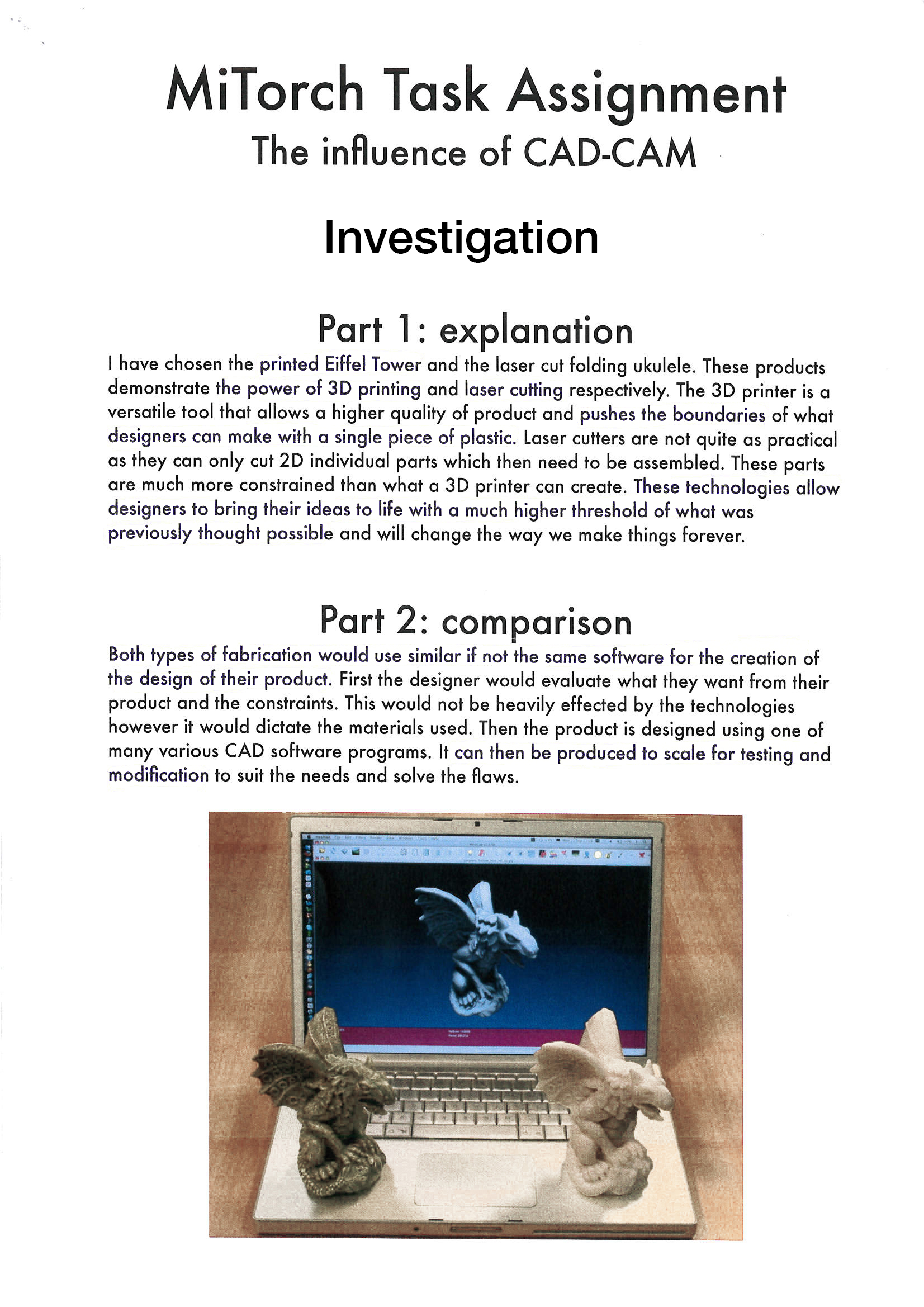 1
Annotation 1
1
Annotation 1
Explains how designers and manufacturers consider a factor (technologies) that impacts on design decisions, including their suitability to produce products 2 Annotation 2
Explains how designers consider factors (materials used with fabrication technologies) that impact on design decisions, including their suitability to produce products
-
Annotations
-
1
Annotation 1
Explains how designers and manufacturers consider a factor (technologies) that impacts on design decisions, including their suitability to produce products -
2
Annotation 2
Explains how designers consider factors (materials used with fabrication technologies) that impact on design decisions, including their suitability to produce products
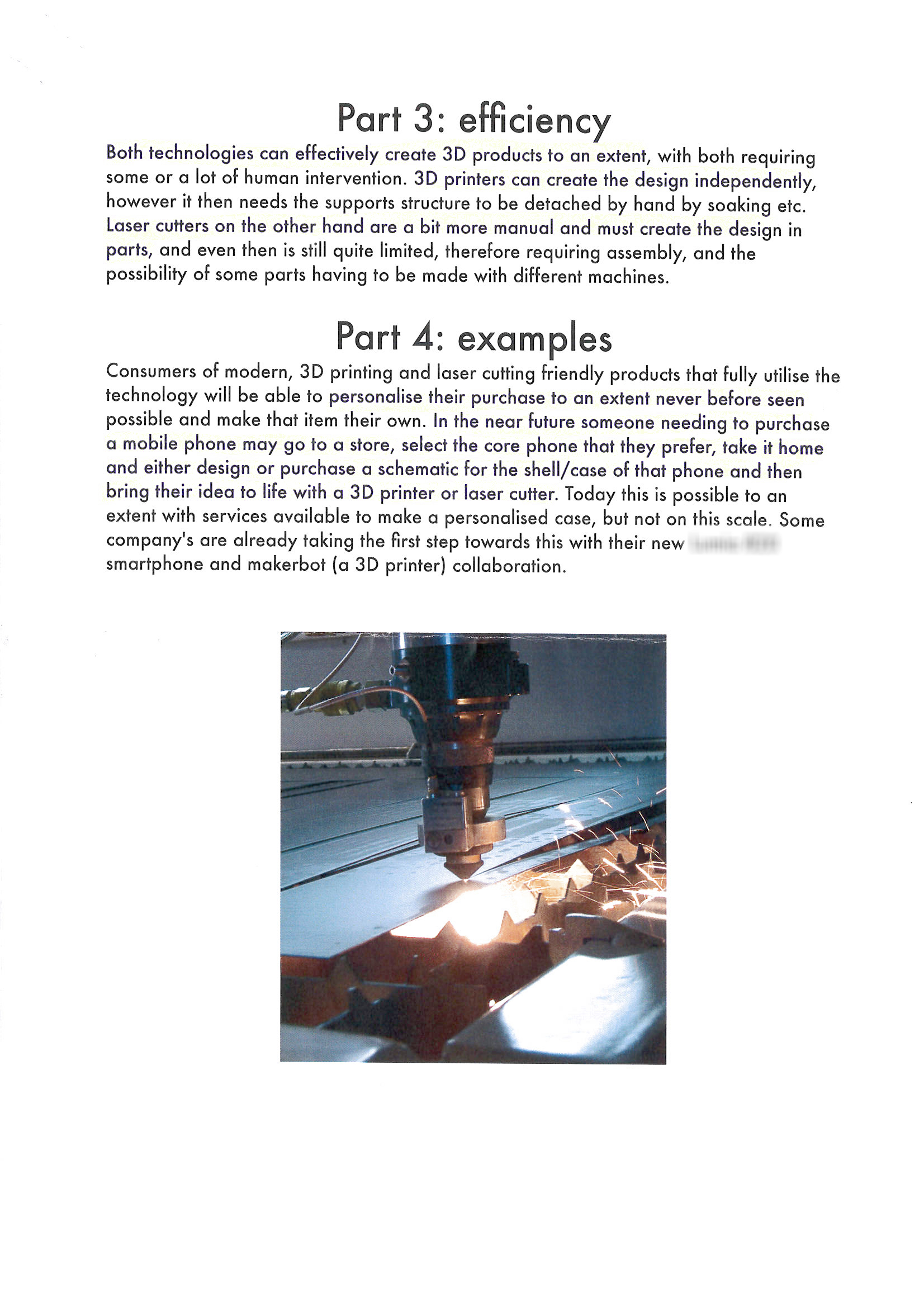 1
Annotation 1
1
Annotation 1
Explains clearly how designers consider factors (efficiency of fabrication technologies) that impact on design decisions, including their suitability to produce products 2 Annotation 2
Explains how designers consider factors (personalisation of products enabled by fabrication technologies) that may influence future design decisions
-
Annotations
-
1
Annotation 1
Explains clearly how designers consider factors (efficiency of fabrication technologies) that impact on design decisions, including their suitability to produce products -
2
Annotation 2
Explains how designers consider factors (personalisation of products enabled by fabrication technologies) that may influence future design decisions
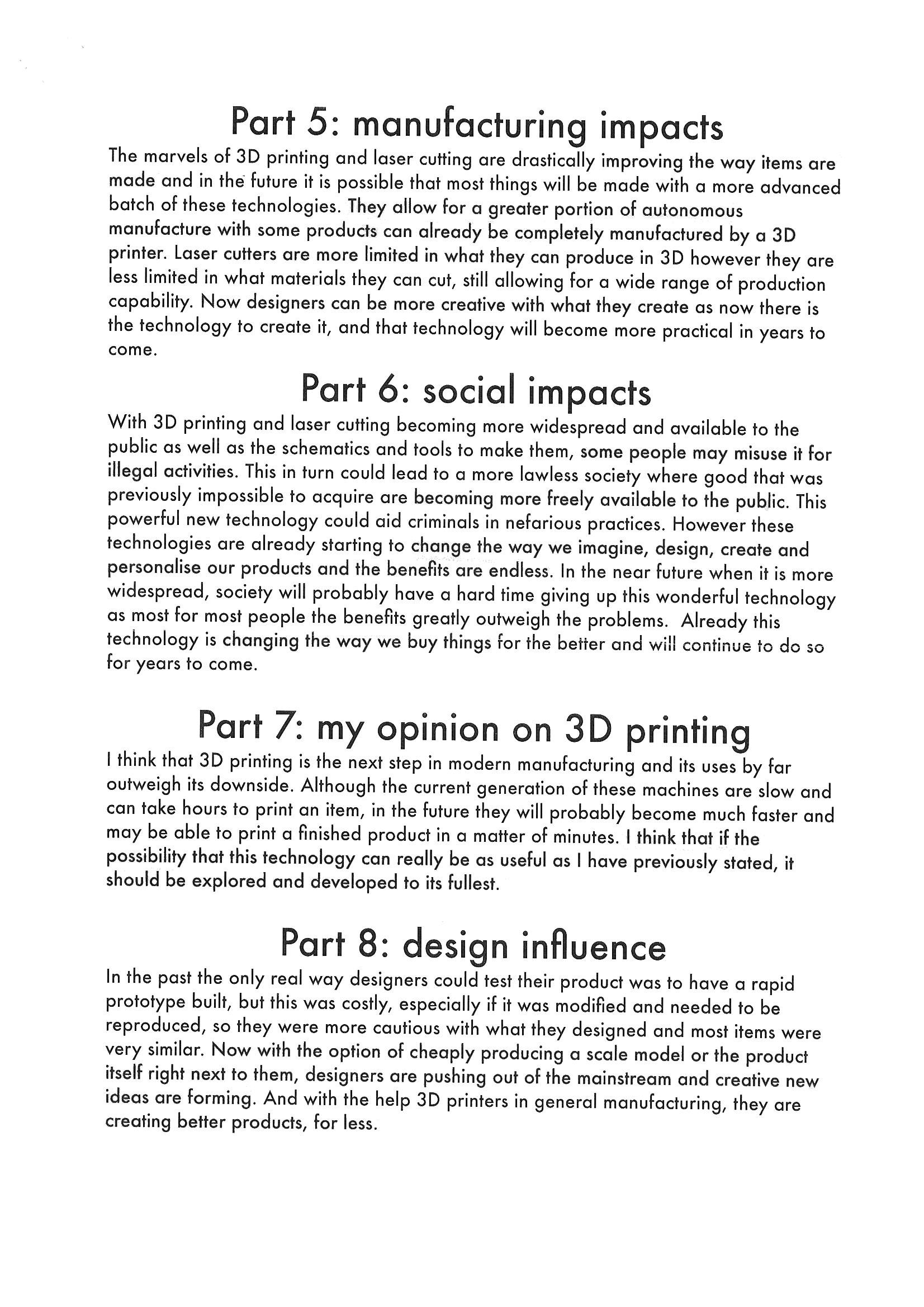 1
Annotation 1
1
Annotation 1
Explains how manufacturers consider factors (capabilities of fabrication technologies) that impact on manufacturing, including their suitability to more autonomously produce products 2 Annotation 2
Explains social factors associated with technologies (3D printing and laser cutting) to produce products 3 Annotation 3
Evaluates the features of a technology (3D printing) and its appropriateness for purpose 4 Annotation 4
Explains how designers consider factors that influence design decisions (ability to rapidly create and test product models at low cost) to produce better and cheaper products
-
Annotations
-
1
Annotation 1
Explains how manufacturers consider factors (capabilities of fabrication technologies) that impact on manufacturing, including their suitability to more autonomously produce products -
2
Annotation 2
Explains social factors associated with technologies (3D printing and laser cutting) to produce products -
3
Annotation 3
Evaluates the features of a technology (3D printing) and its appropriateness for purpose -
4
Annotation 4
Explains how designers consider factors that influence design decisions (ability to rapidly create and test product models at low cost) to produce better and cheaper products

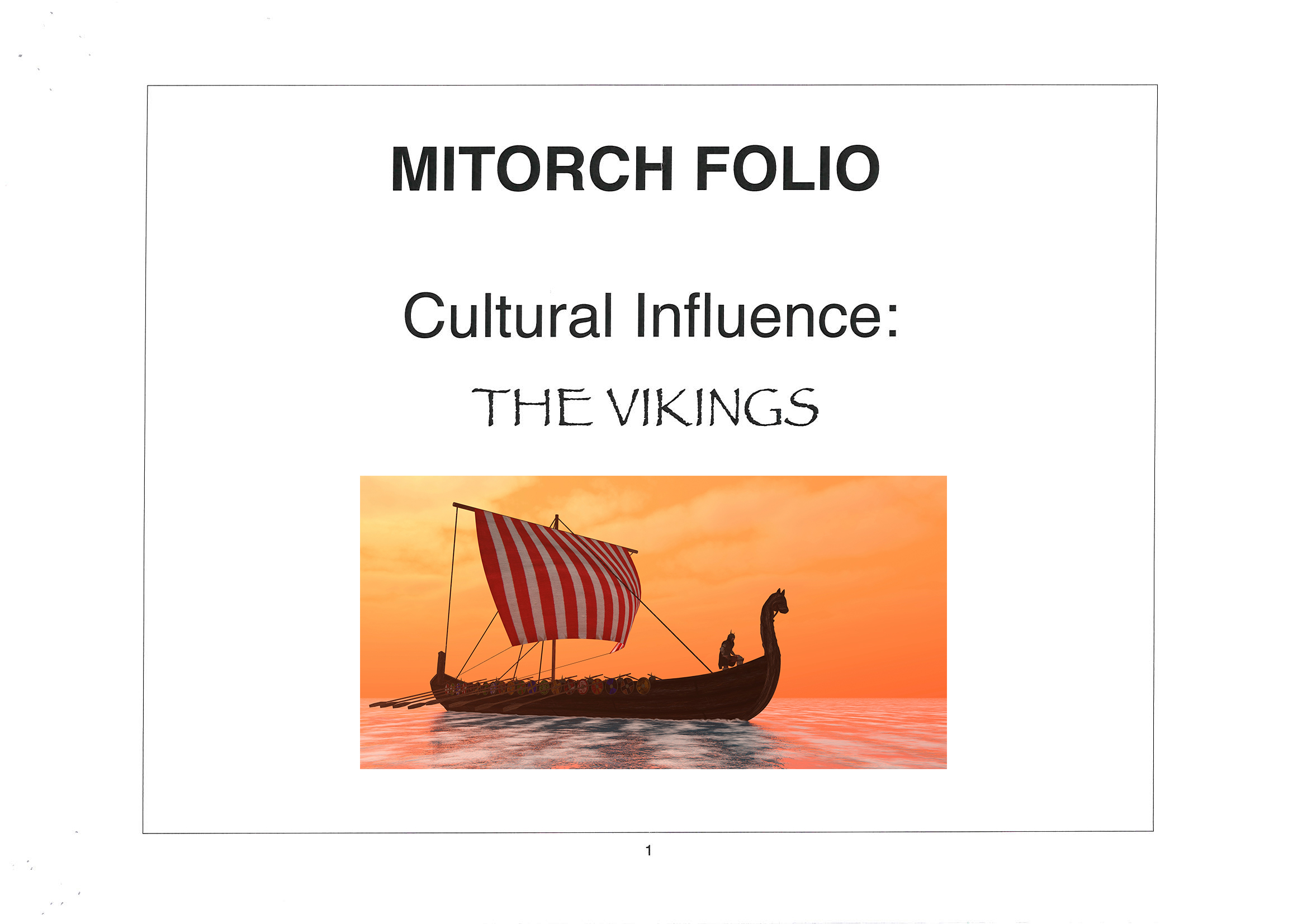
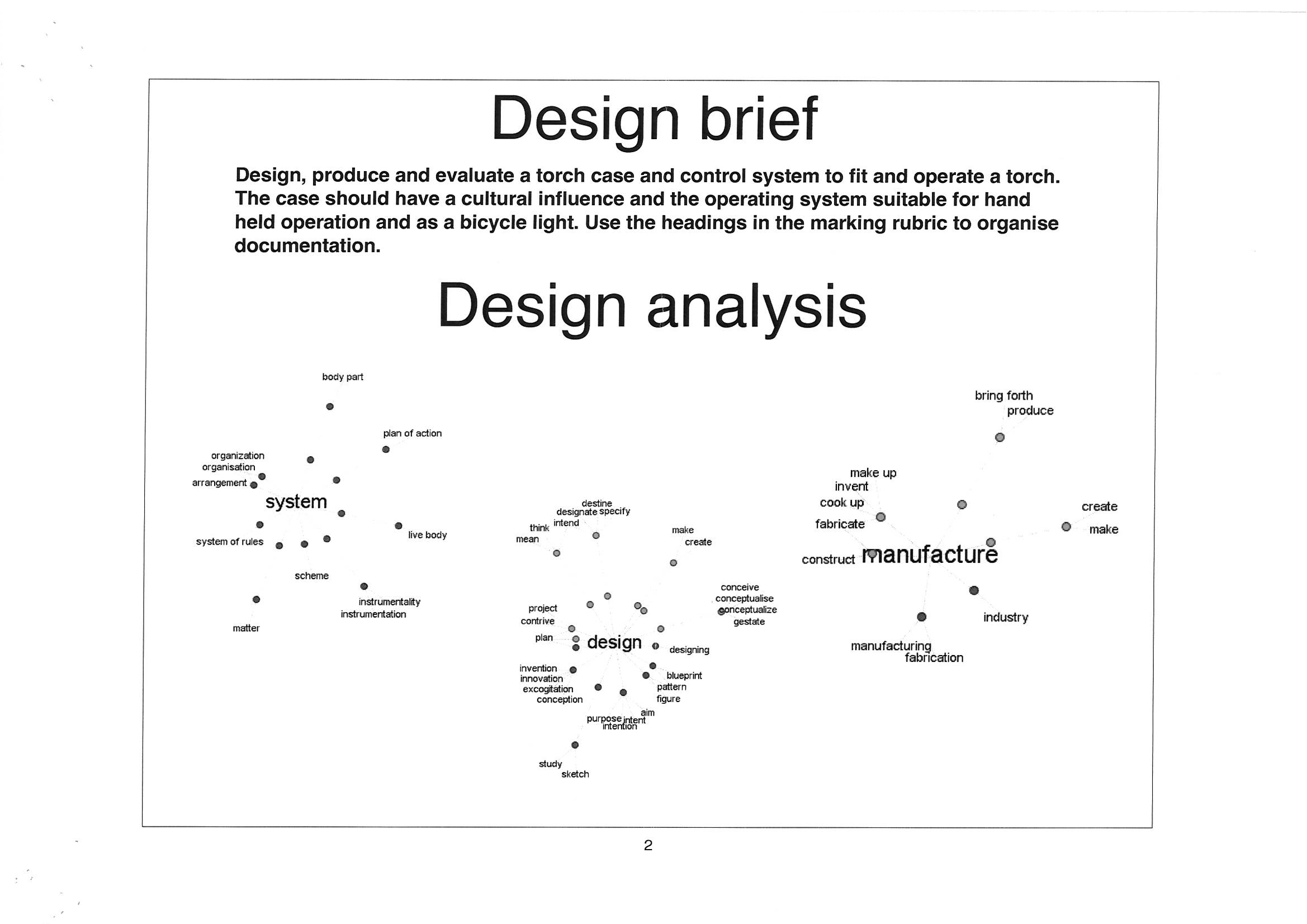 1
Annotation 1
1
Annotation 1
Analyses the design brief in terms of systems, design and manufacture
-
Annotations
-
1
Annotation 1
Analyses the design brief in terms of systems, design and manufacture
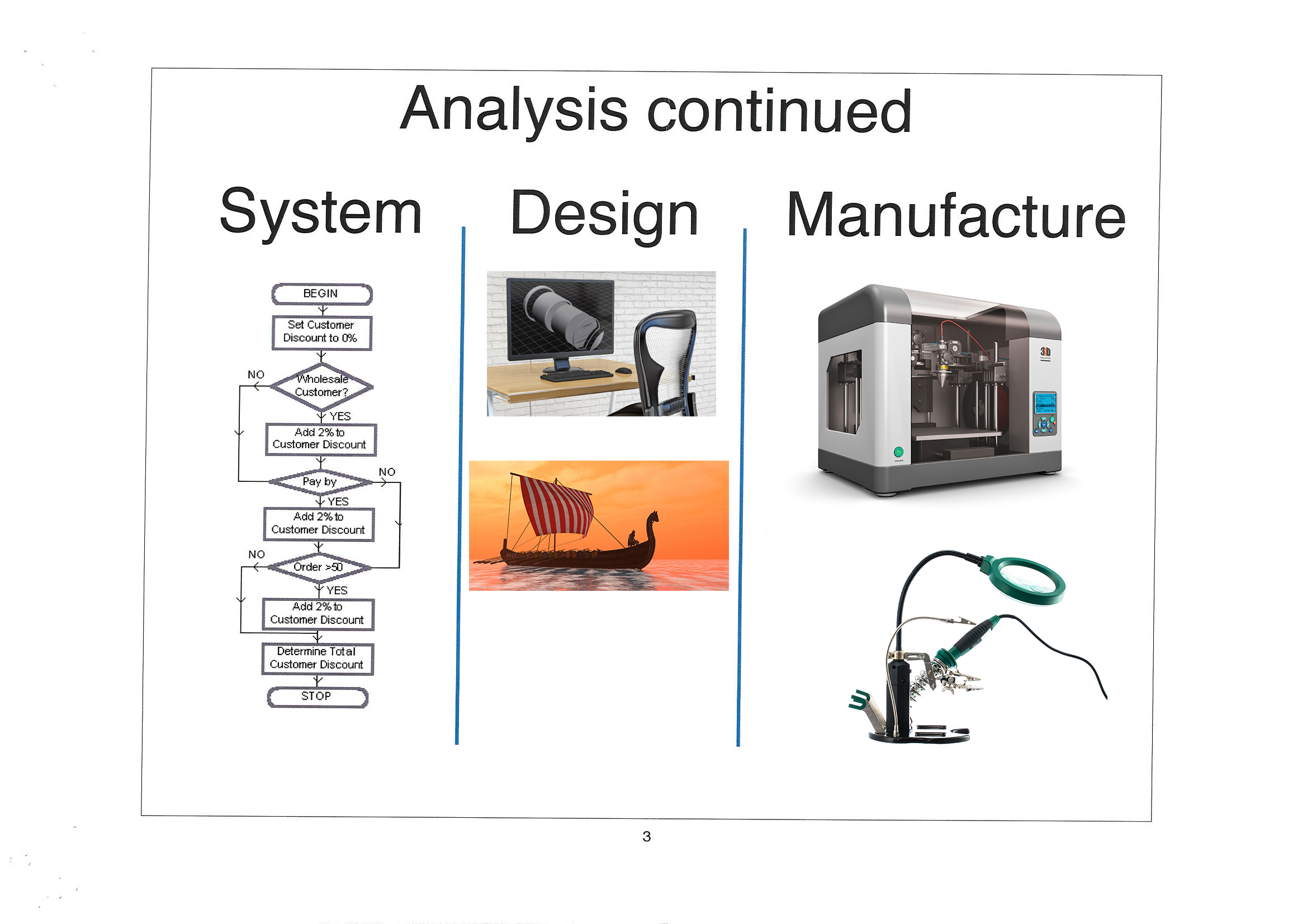 1
Annotation 1
1
Annotation 1
Represents an analysis of the brief in another format
-
Annotations
-
1
Annotation 1
Represents an analysis of the brief in another format
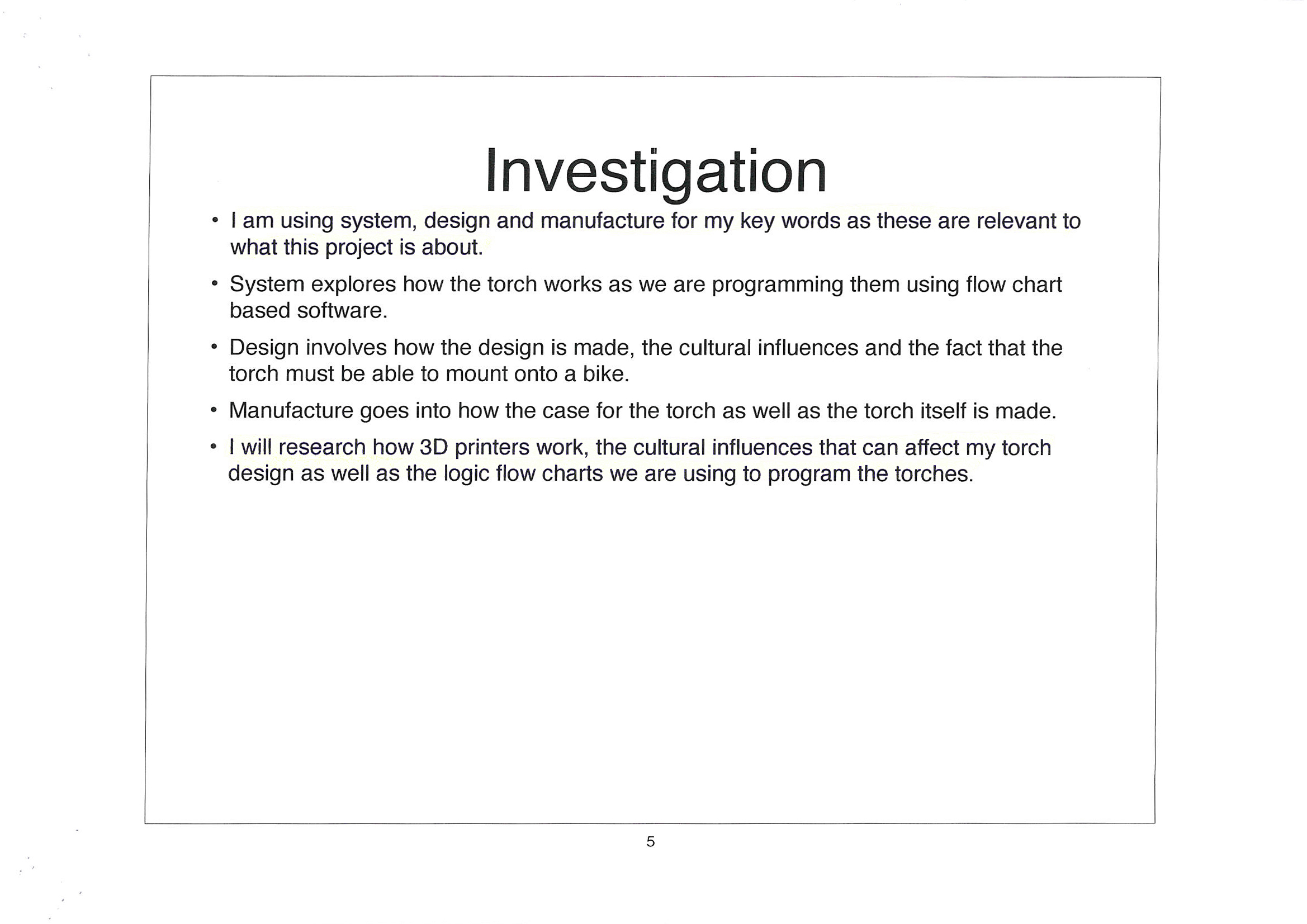
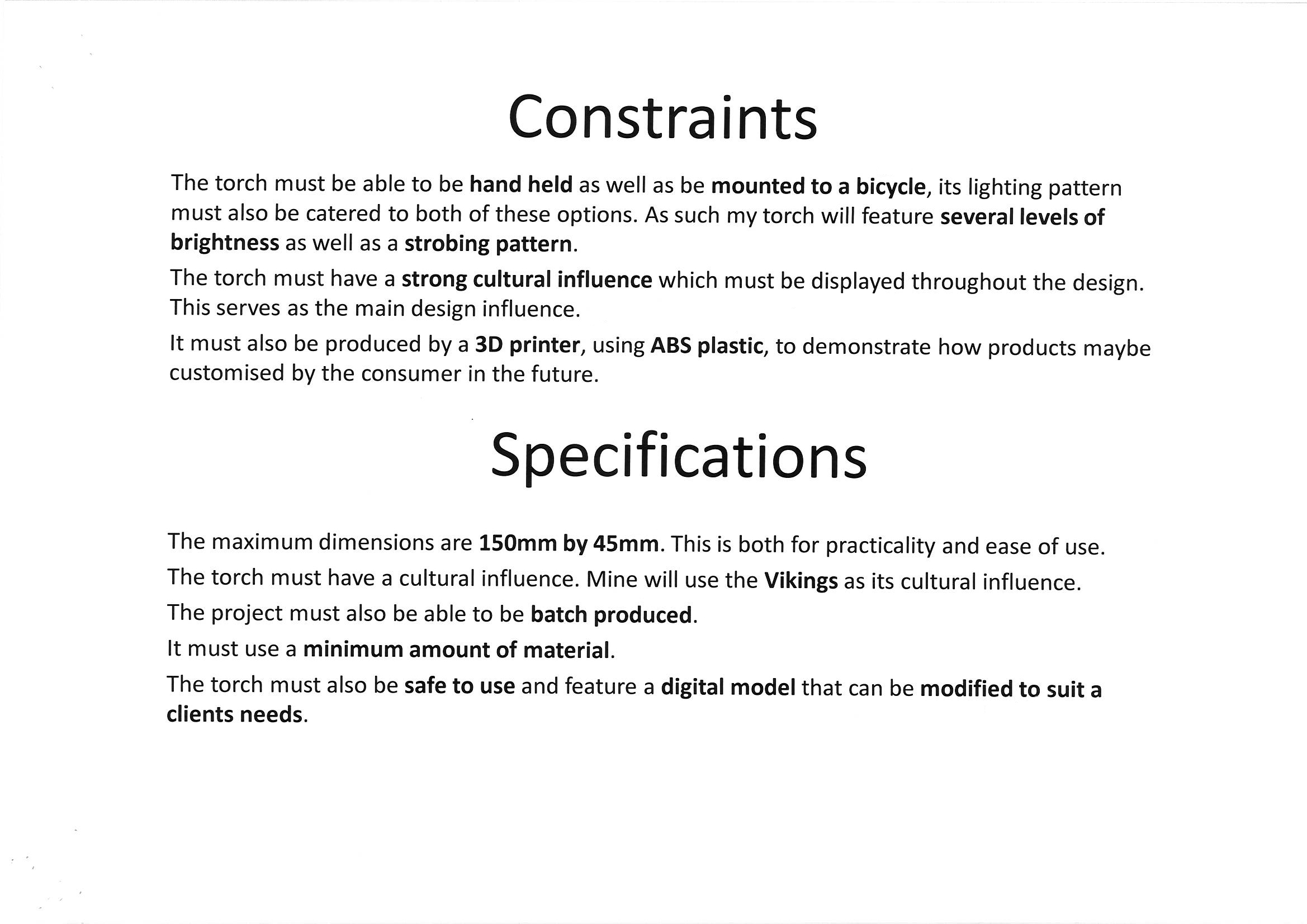 1
Annotation 1
1
Annotation 1
Lists and explains the constraints associated with the design brief 2 Annotation 2
Lists and explains the specifications associated with the design brief
-
Annotations
-
1
Annotation 1
Lists and explains the constraints associated with the design brief -
2
Annotation 2
Lists and explains the specifications associated with the design brief
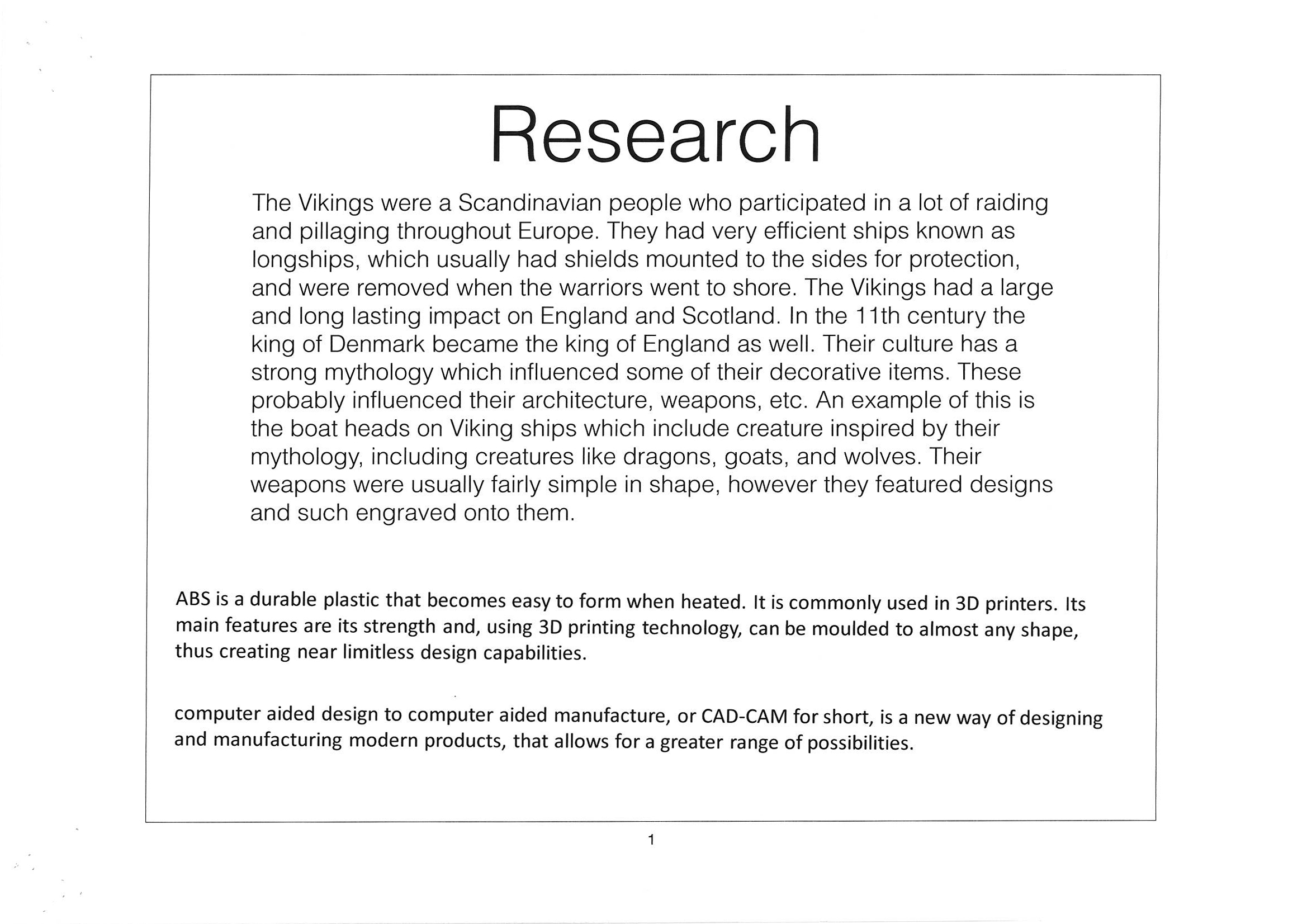 1
Annotation 1
1
Annotation 1
Researches cultural aspects (related to Vikings) to assist in the development of design ideas for the torch 2 Annotation 2
Researches briefly materials and computer-aided design and their appropriateness for purpose in 3D printing
-
Annotations
-
1
Annotation 1
Researches cultural aspects (related to Vikings) to assist in the development of design ideas for the torch -
2
Annotation 2
Researches briefly materials and computer-aided design and their appropriateness for purpose in 3D printing
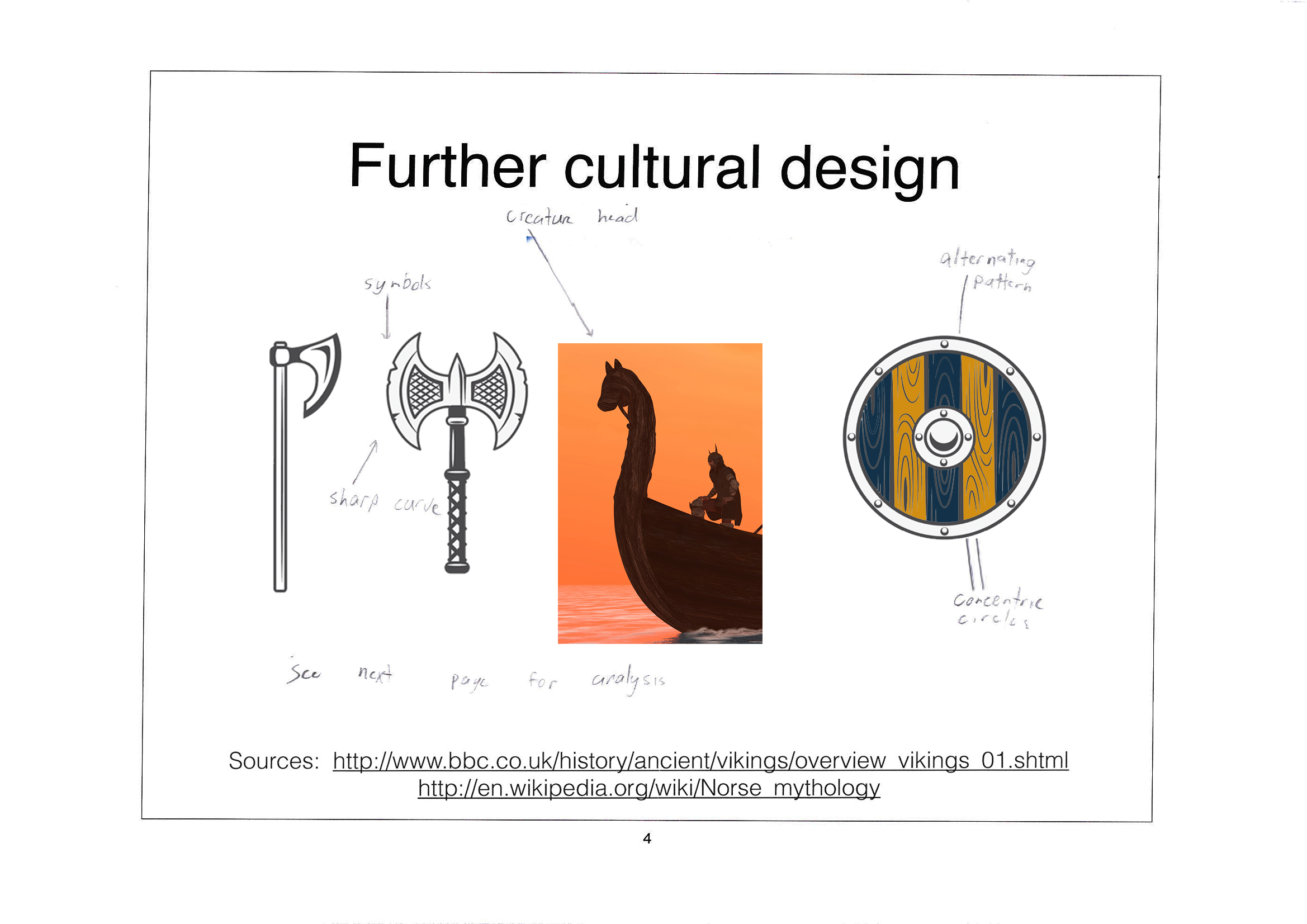 1
Annotation 1
1
Annotation 1
Collects and briefly annotates ideas for the designed solution
-
Annotations
-
1
Annotation 1
Collects and briefly annotates ideas for the designed solution
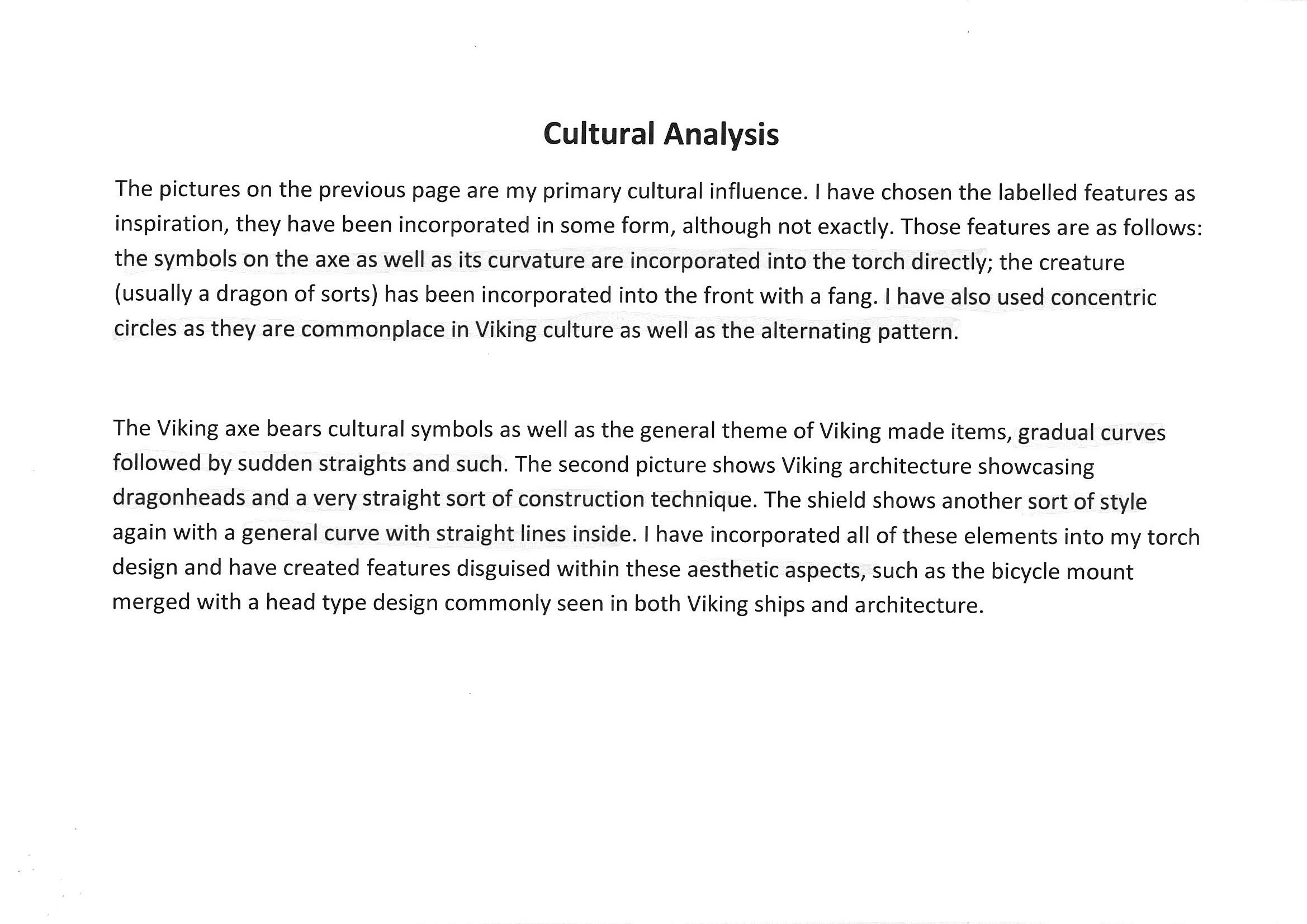 1
Annotation 1
1
Annotation 1
Analyses how design ideas are connected to the cultural influence (Vikings)
-
Annotations
-
1
Annotation 1
Analyses how design ideas are connected to the cultural influence (Vikings)
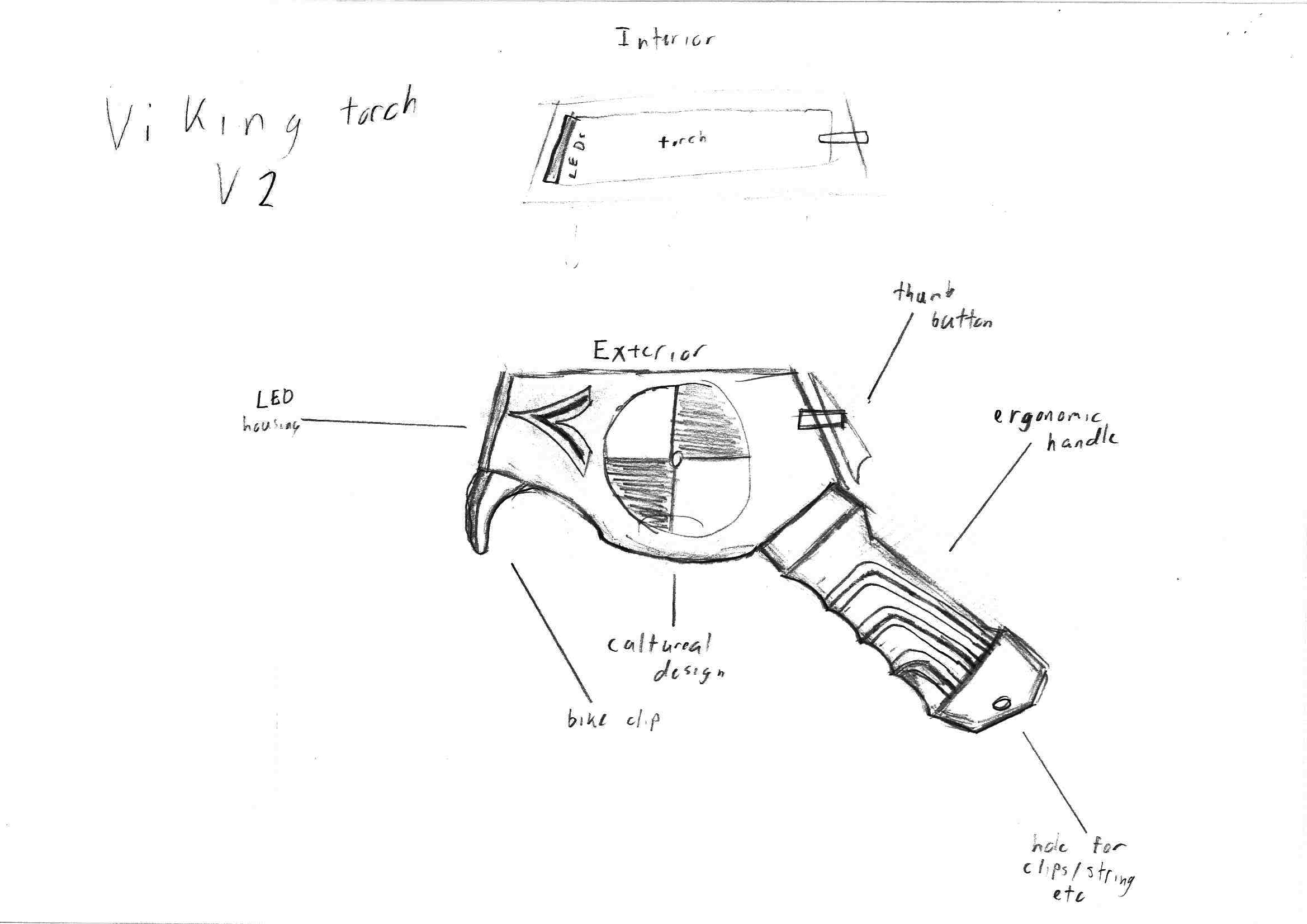 1
Annotation 1
1
Annotation 1
Creates an annotated design for the torch case that shows connections to the cultural influence (Vikings) and some of the listed constraints and specifications
-
Annotations
-
1
Annotation 1
Creates an annotated design for the torch case that shows connections to the cultural influence (Vikings) and some of the listed constraints and specifications
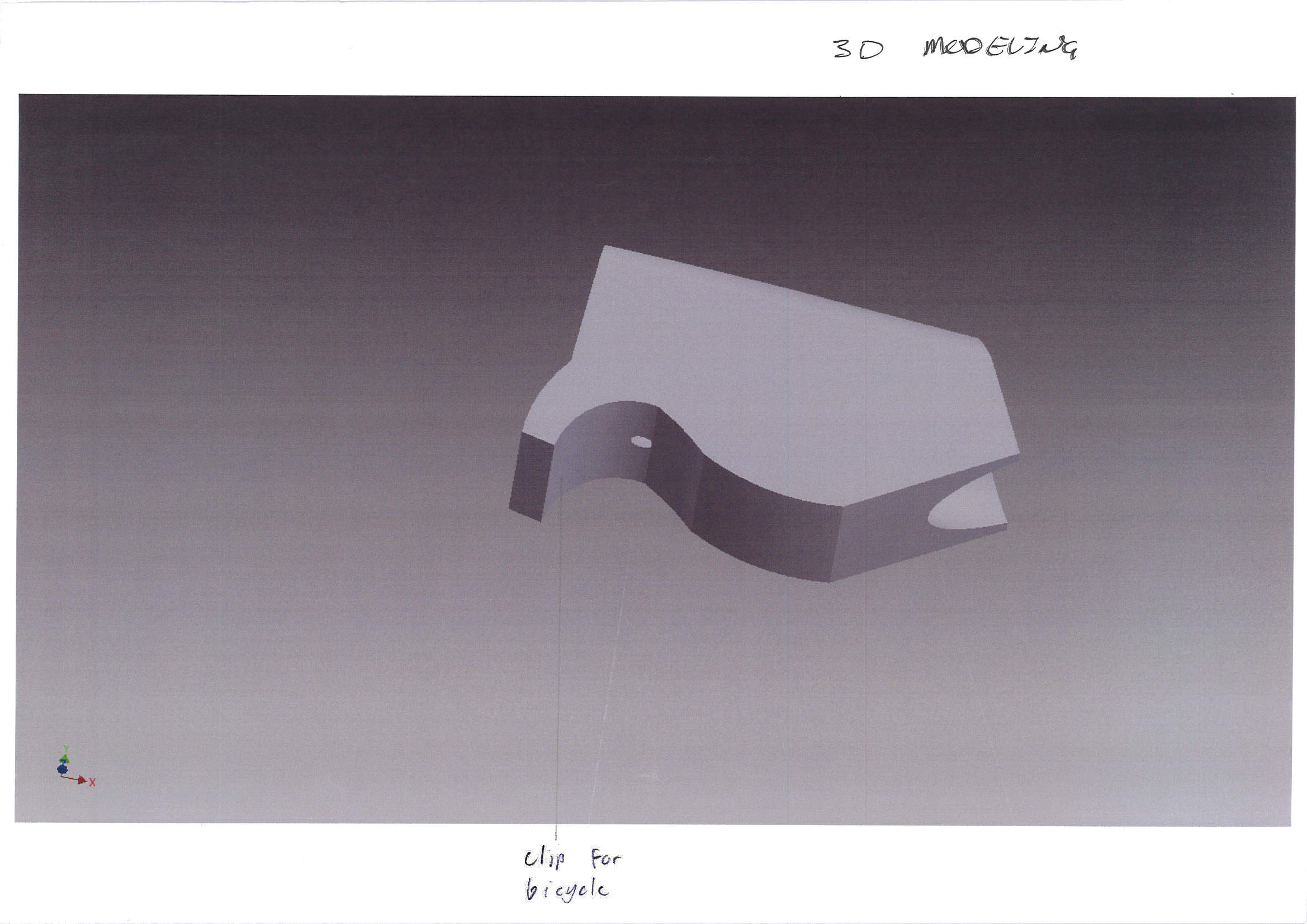 1
Annotation 1
1
Annotation 1
Creates rendered 3D computer-aided design models of the torch case
-
Annotations
-
1
Annotation 1
Creates rendered 3D computer-aided design models of the torch case
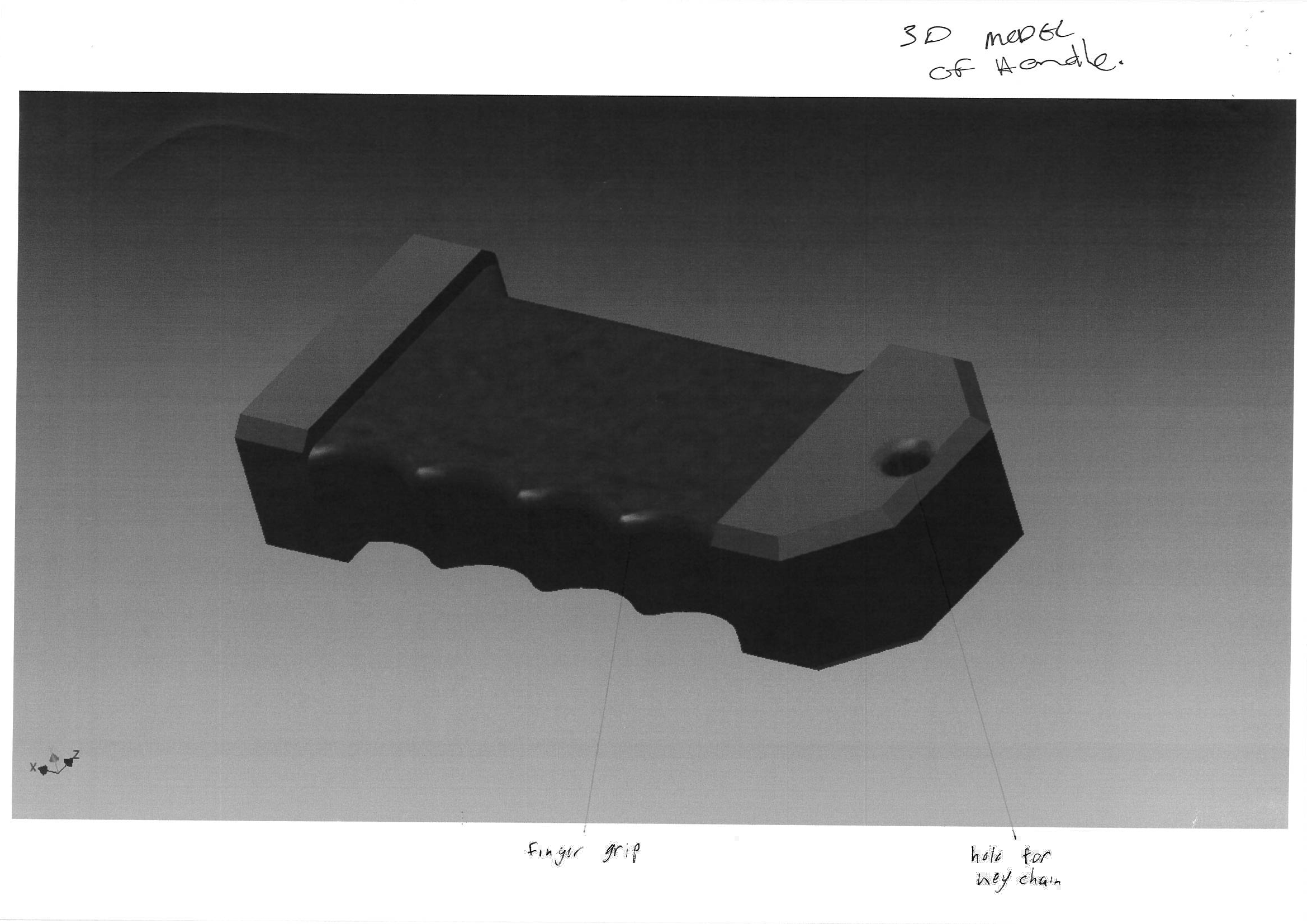
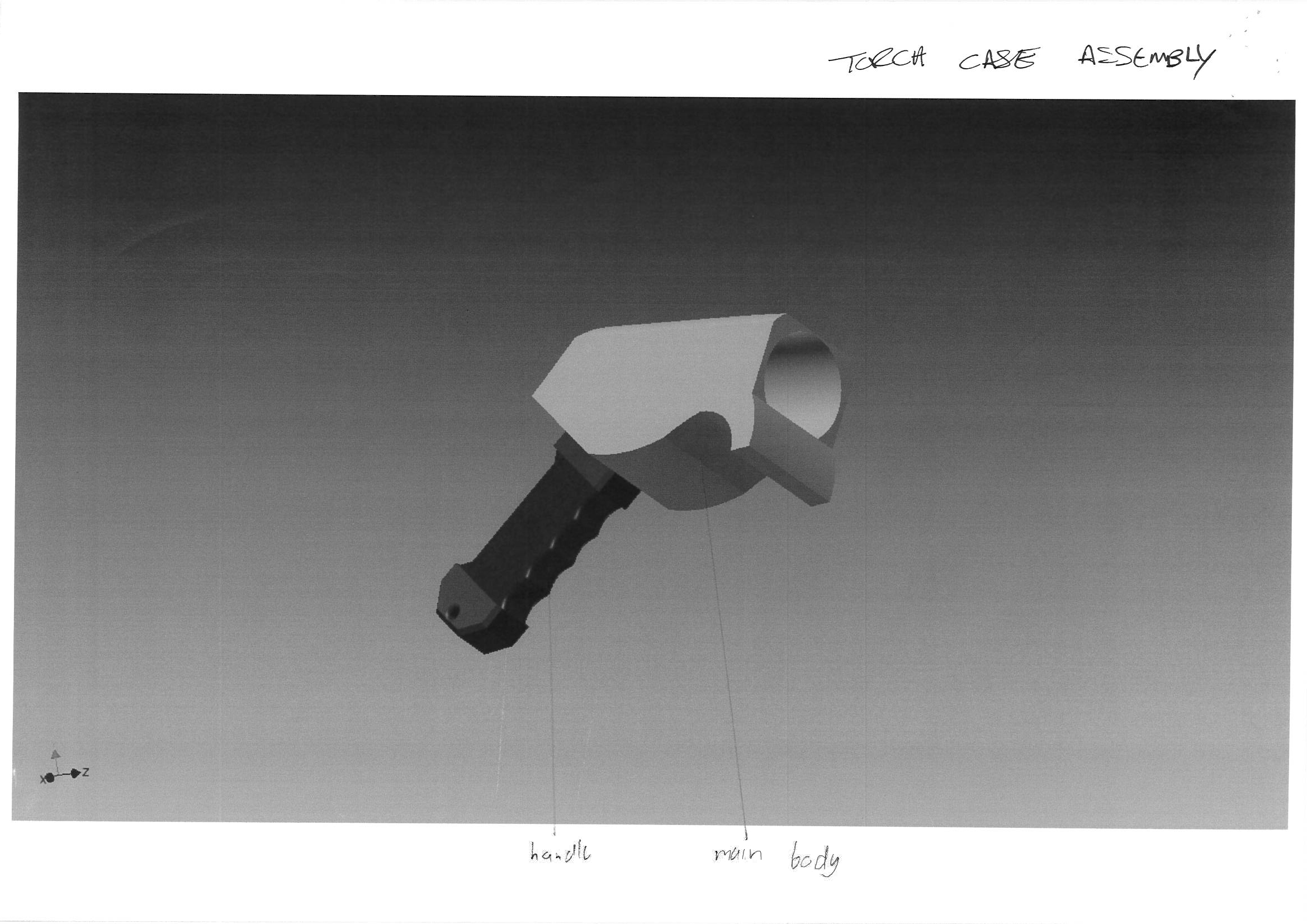
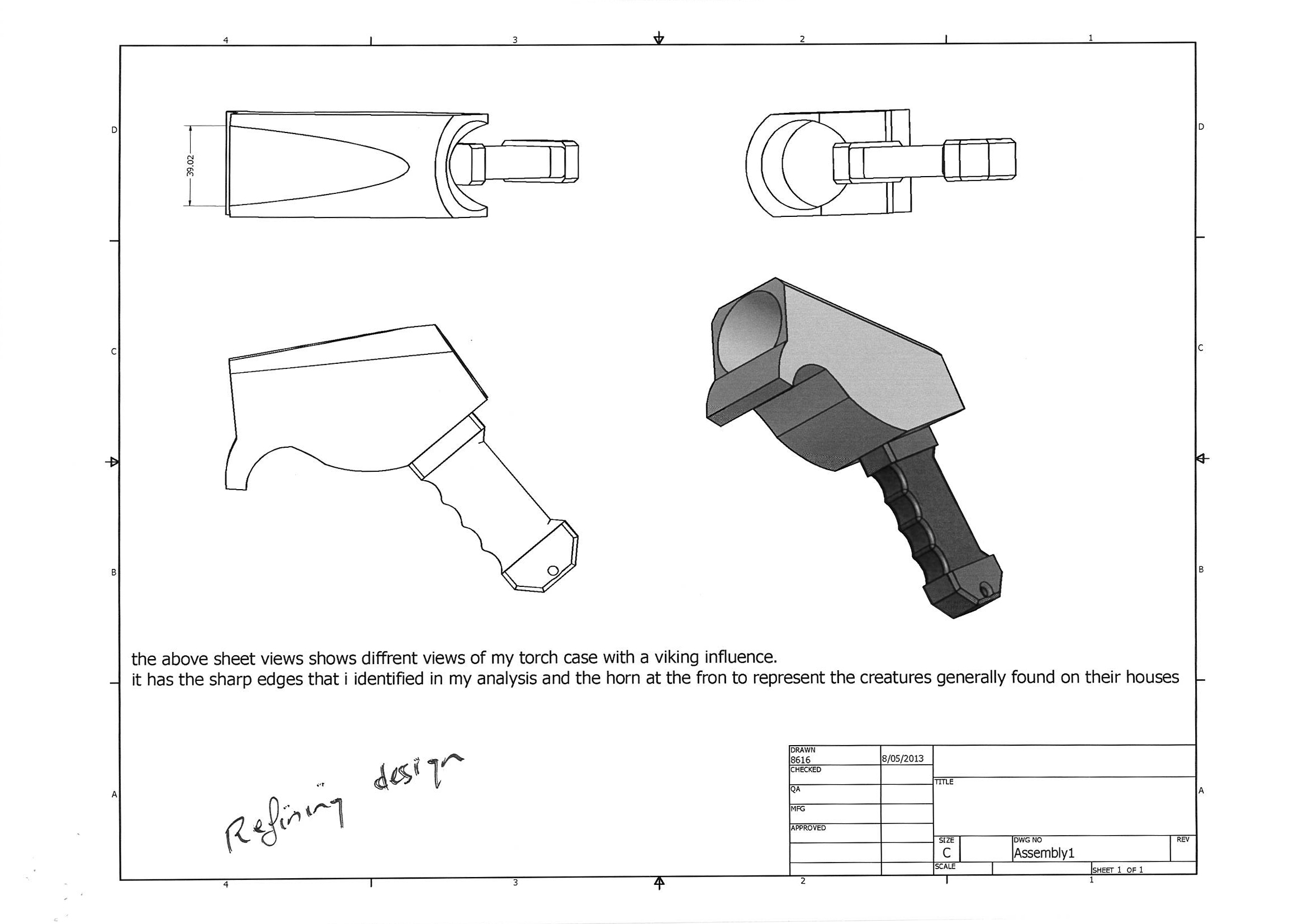 1
Annotation 1
1
Annotation 1
Creates an orthogonal and rendered 3D computer-aided design of the torch case assembly
-
Annotations
-
1
Annotation 1
Creates an orthogonal and rendered 3D computer-aided design of the torch case assembly
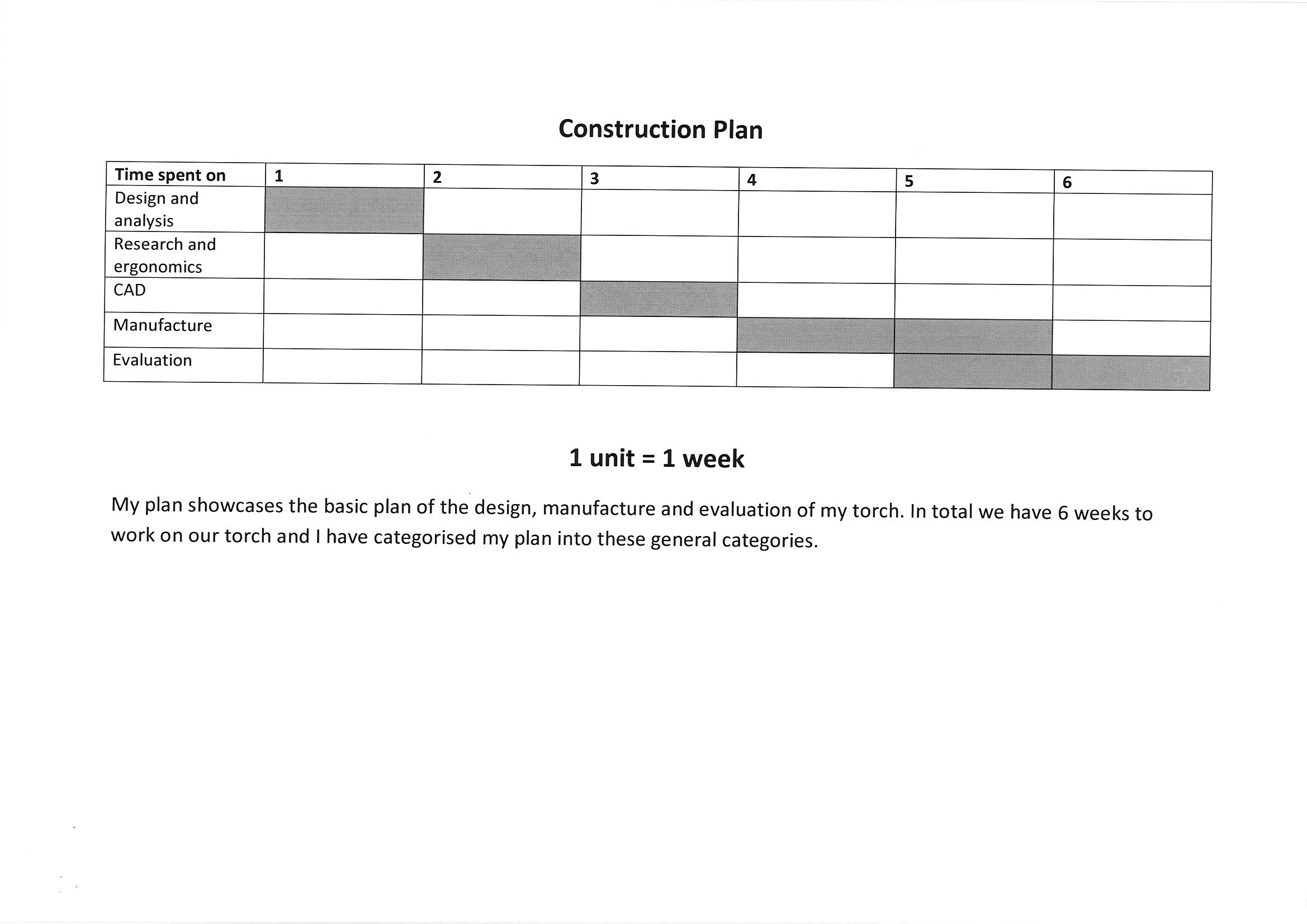 1
Annotation 1
1
Annotation 1
Develops a sequenced production (Gantt chart) and management plan when producing a designed solution (torch)
-
Annotations
-
1
Annotation 1
Develops a sequenced production (Gantt chart) and management plan when producing a designed solution (torch)
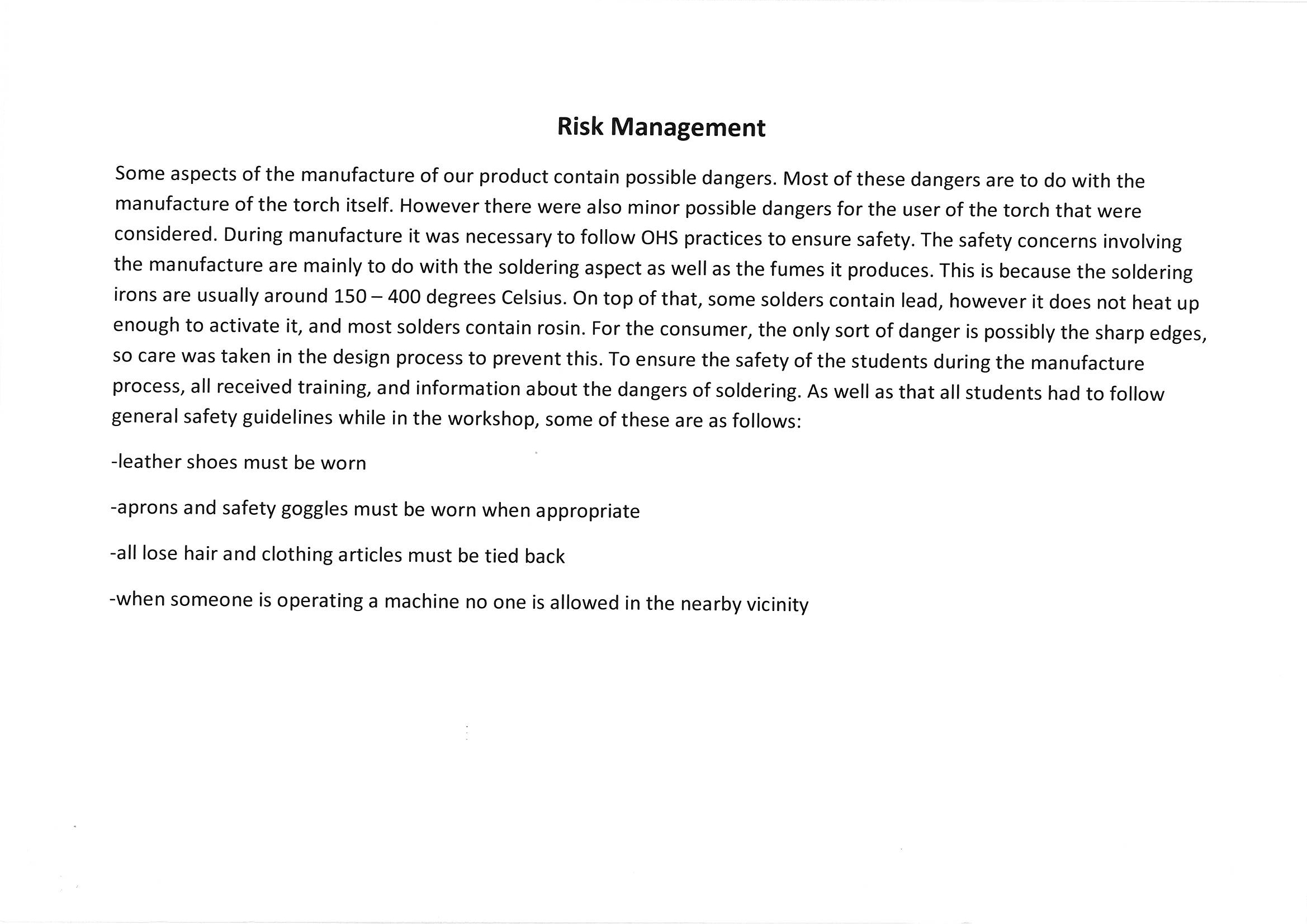 1
Annotation 1
1
Annotation 1
Outlines a risk management plan for the maker and consumer (user) of the torch 2 Annotation 2
Identifies appropriate safety measures including personal protective equipment (PPE) to be used when producing a designed solution
-
Annotations
-
1
Annotation 1
Outlines a risk management plan for the maker and consumer (user) of the torch -
2
Annotation 2
Identifies appropriate safety measures including personal protective equipment (PPE) to be used when producing a designed solution
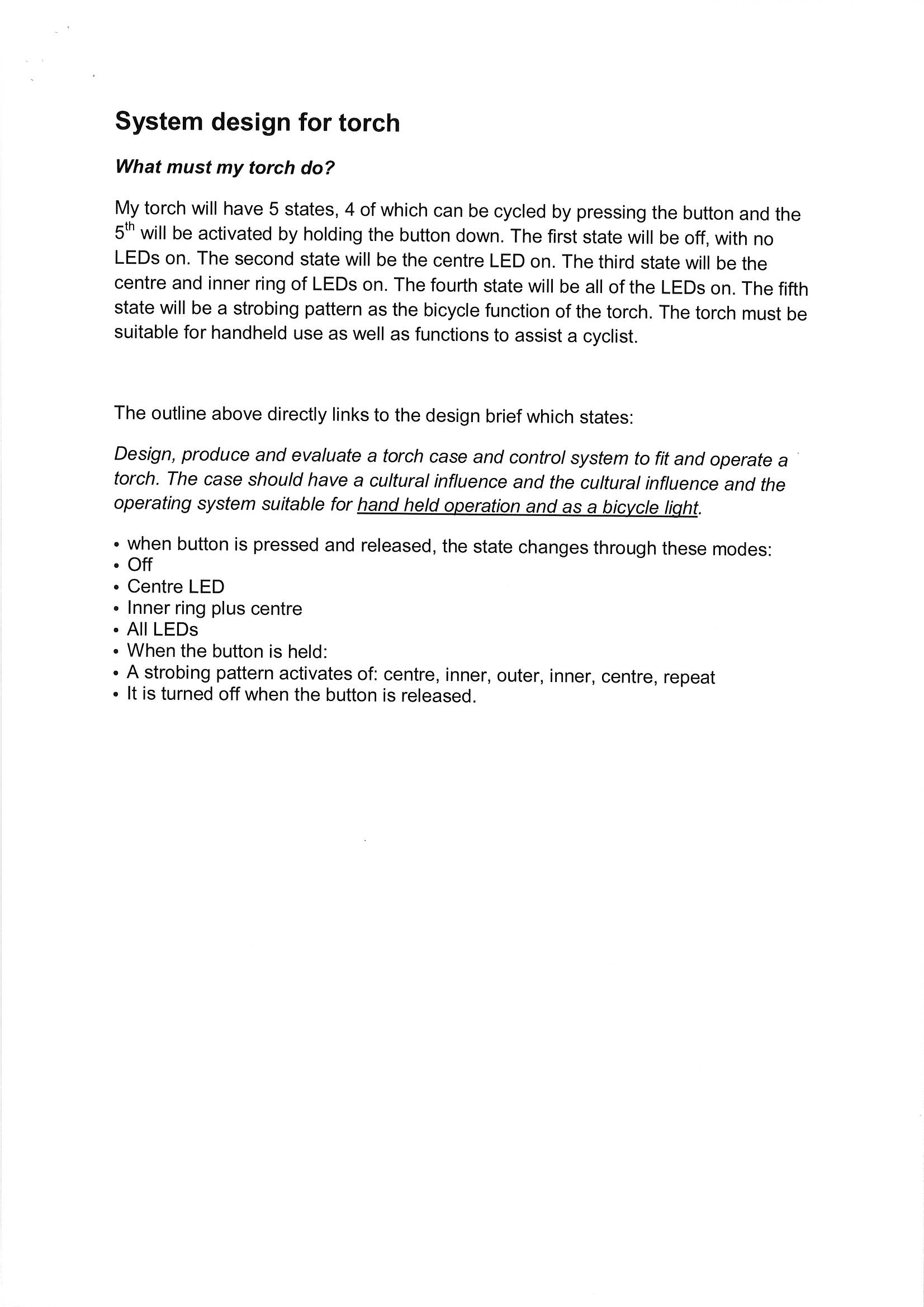 1
Annotation 1
1
Annotation 1
Describes the proposed torch's system (lighting states) and its appropriateness for purpose 2 Annotation 2
Lists the proposed torch's system modes
-
Annotations
-
1
Annotation 1
Describes the proposed torch's system (lighting states) and its appropriateness for purpose -
2
Annotation 2
Lists the proposed torch's system modes
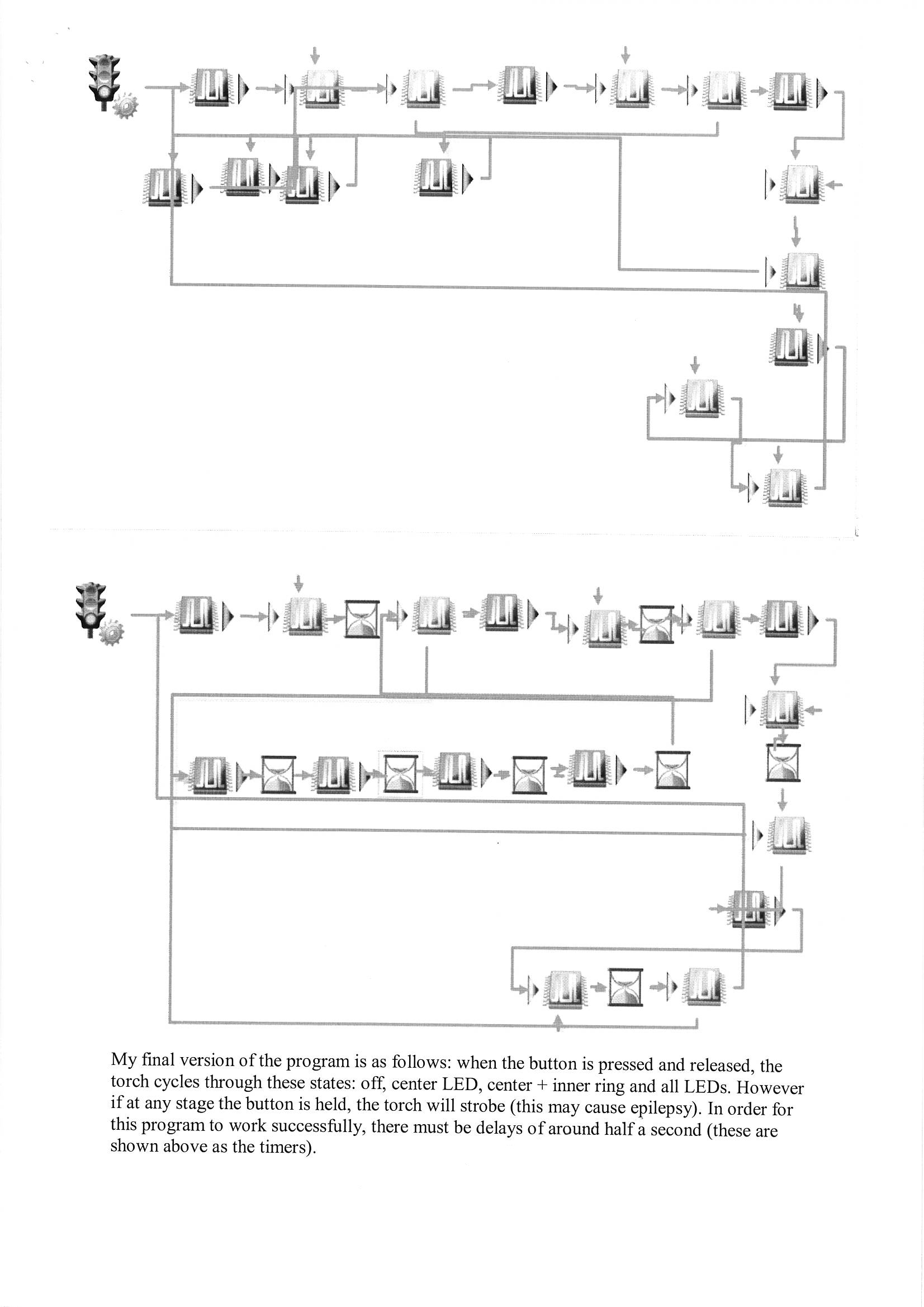 1
Annotation 1
1
Annotation 1
Creates a computer program simulation for the operation of the system for the designed solution (torch)
-
Annotations
-
1
Annotation 1
Creates a computer program simulation for the operation of the system for the designed solution (torch)
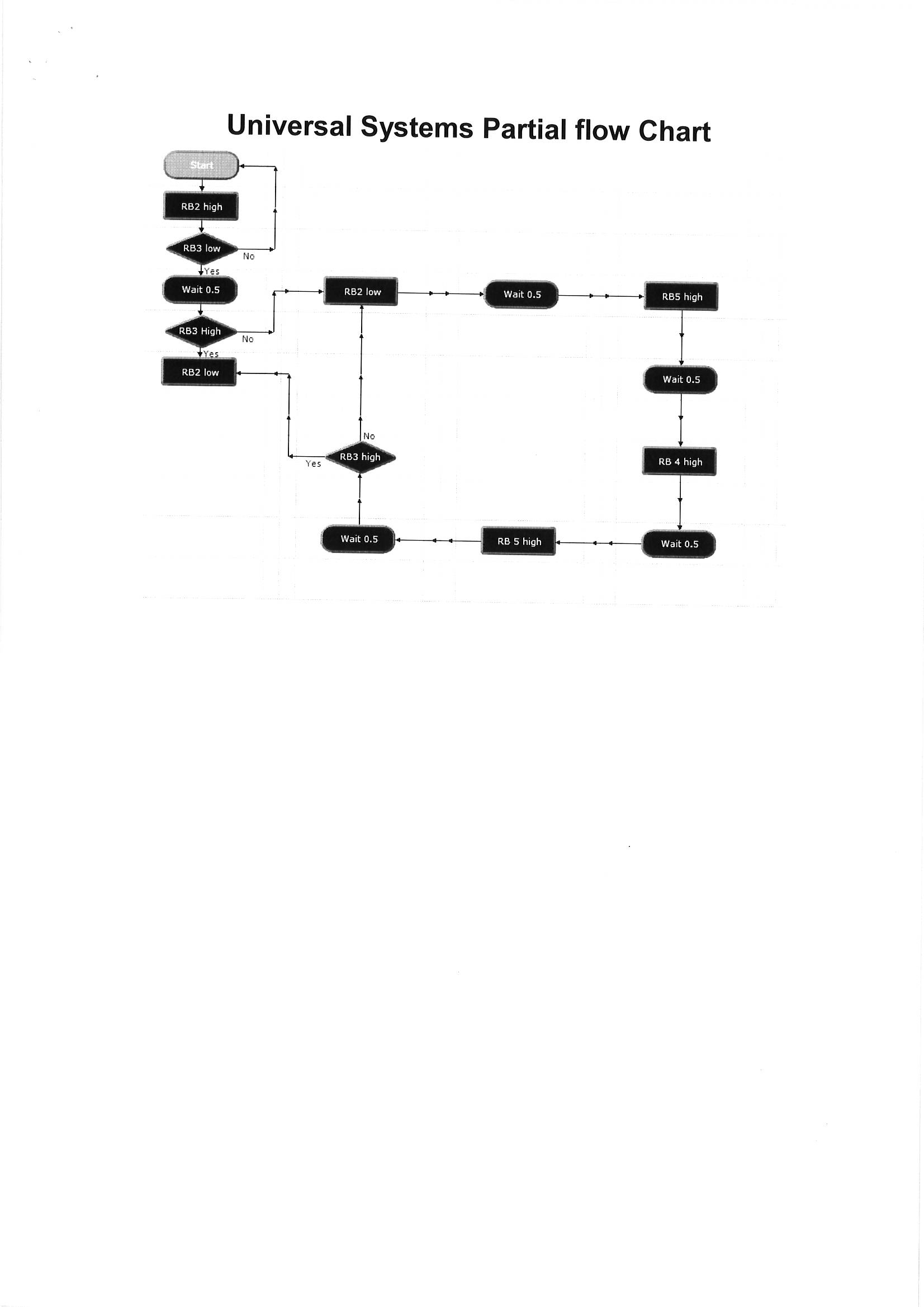 1
Annotation 1
1
Annotation 1
Tests the technology (flowchart in the software program) to evaluate whether the torch will function as required
-
Annotations
-
1
Annotation 1
Tests the technology (flowchart in the software program) to evaluate whether the torch will function as required
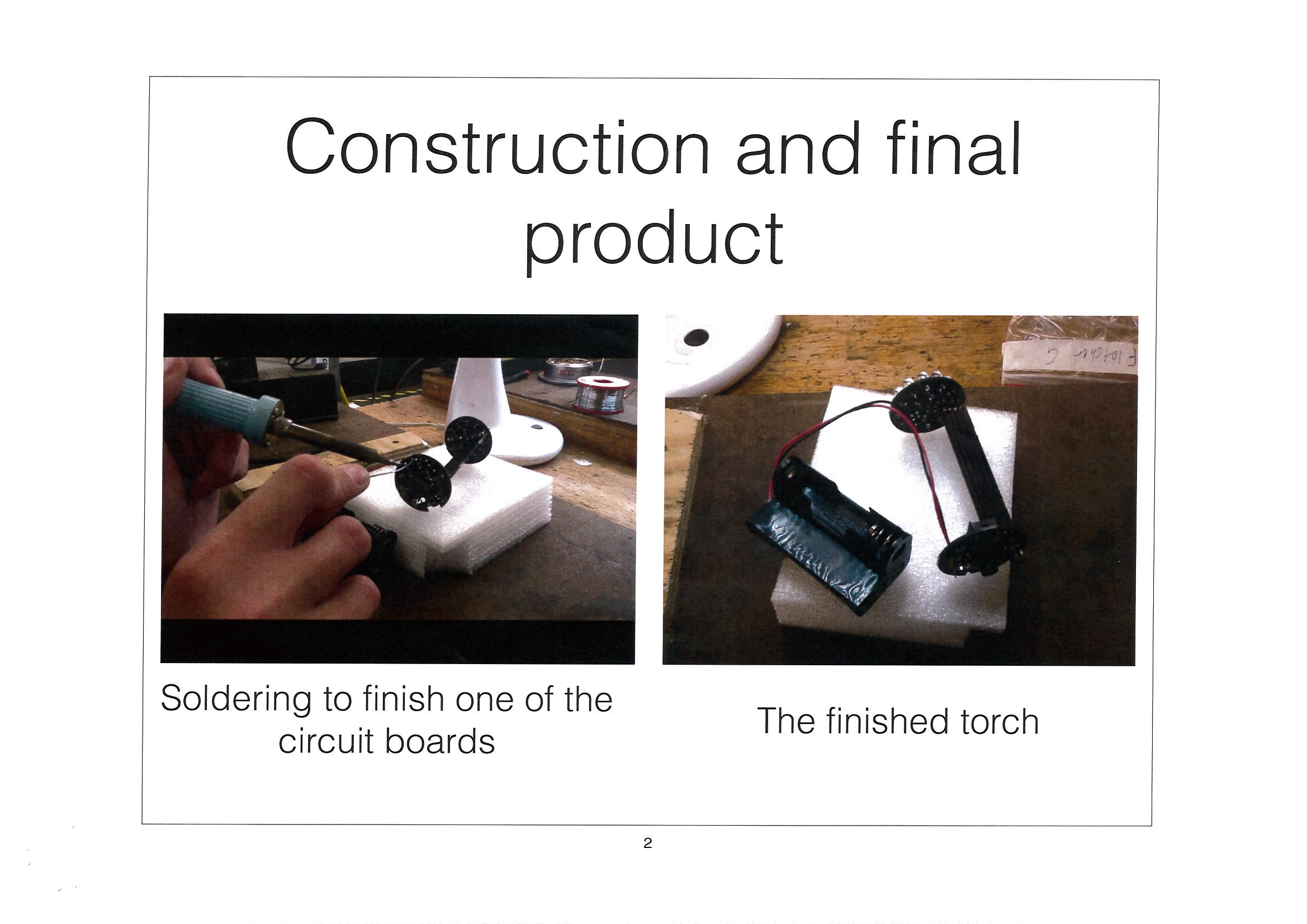 1
Annotation 1
1
Annotation 1
Selects and uses appropriate technologies (soldering iron, solder and components) skilfully and safely to produce a high-quality designed solution (torch)
-
Annotations
-
1
Annotation 1
Selects and uses appropriate technologies (soldering iron, solder and components) skilfully and safely to produce a high-quality designed solution (torch)
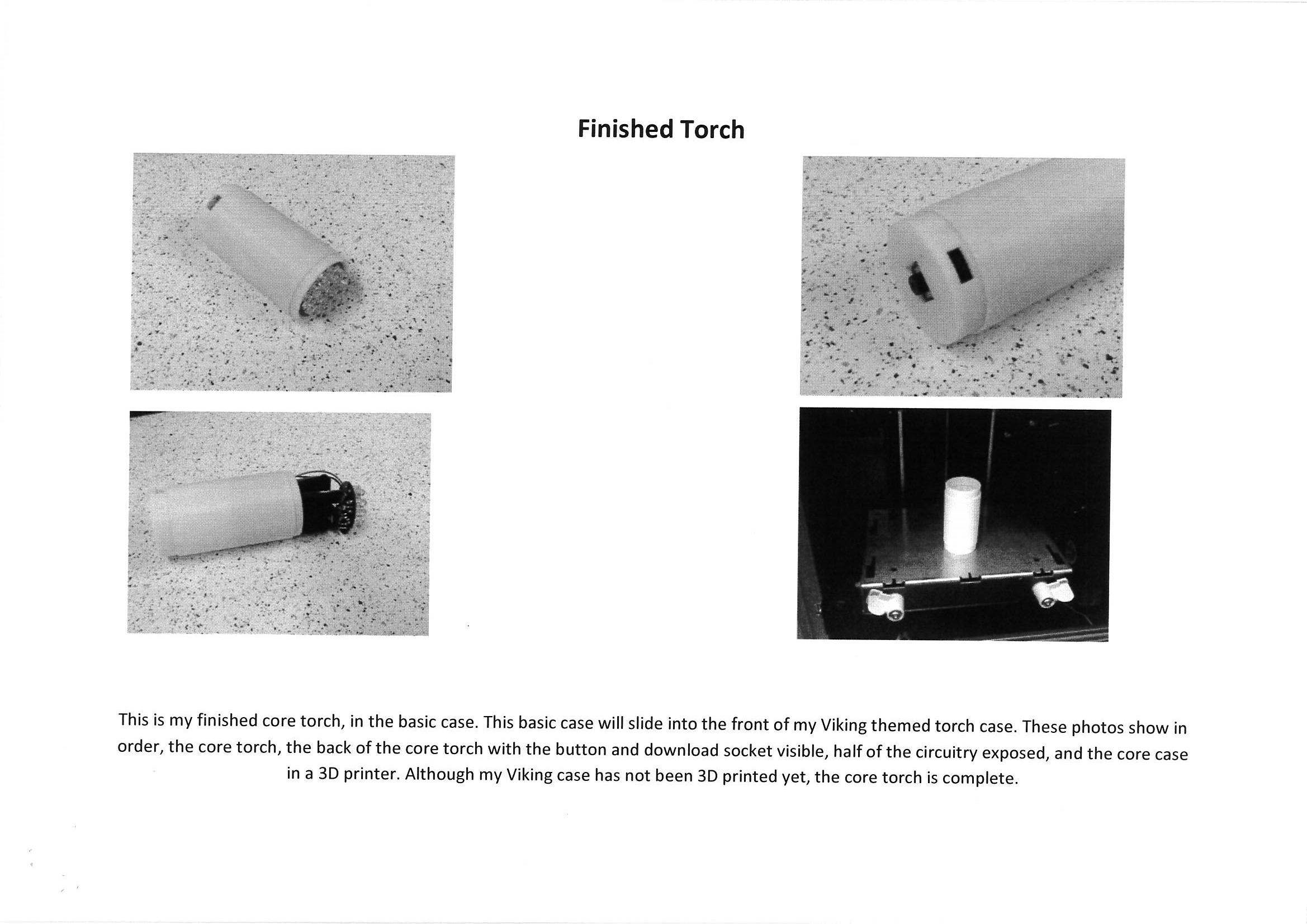 1
Annotation 1
1
Annotation 1
Documents part of the designed solution (core of the torch) to show the arrangement of circuitry and components indicating selection and use of appropriate technologies
-
Annotations
-
1
Annotation 1
Documents part of the designed solution (core of the torch) to show the arrangement of circuitry and components indicating selection and use of appropriate technologies
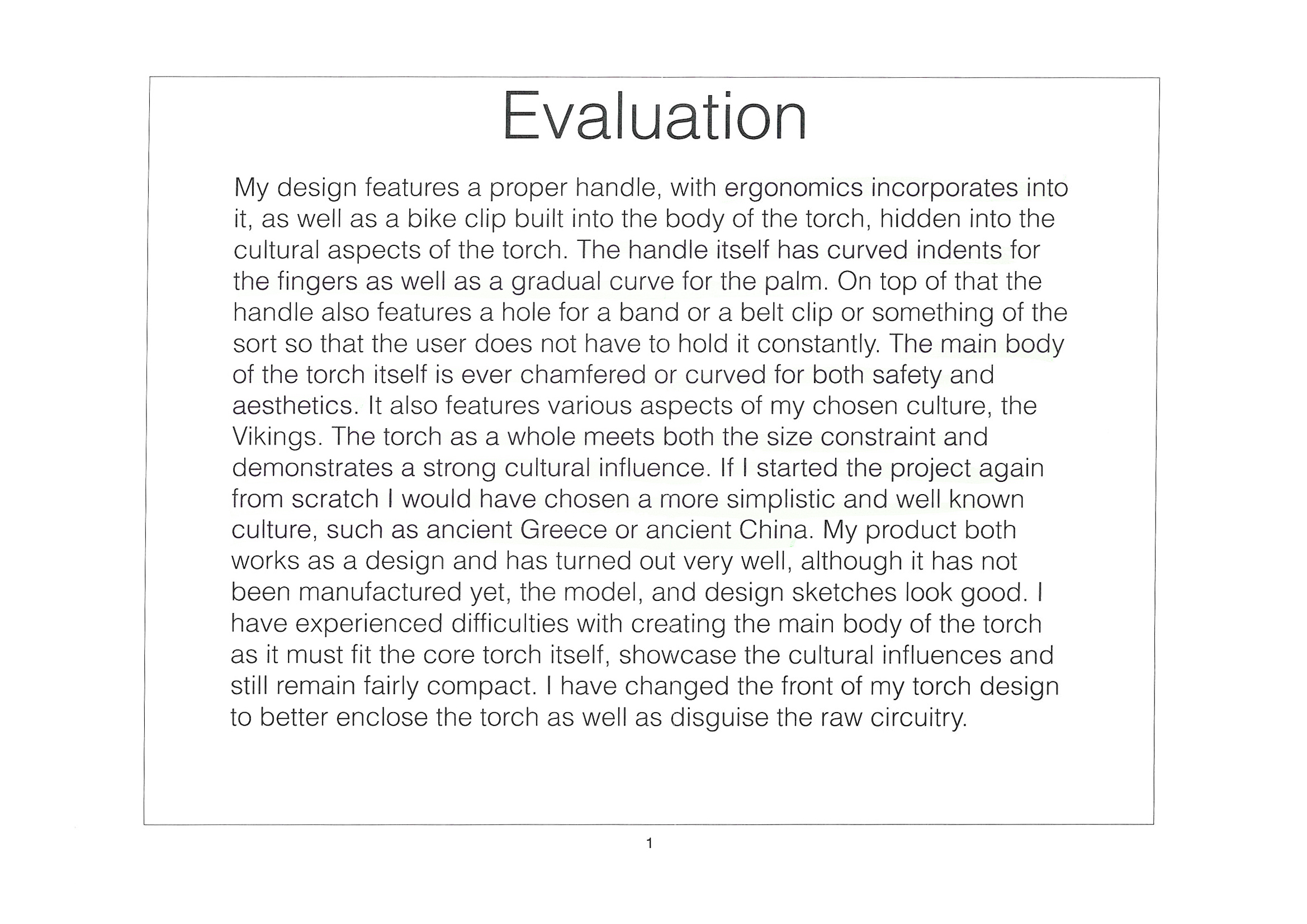 1
Annotation 1
1
Annotation 1
Evaluates design ideas and solutions, making some reference to the constraints and specifications to meet identified needs and opportunities 2 Annotation 2
Evaluates the features of the designed solution and suggests possible improvements, with consideration of constraints, specifications and difficulties that were encountered
-
Annotations
-
1
Annotation 1
Evaluates design ideas and solutions, making some reference to the constraints and specifications to meet identified needs and opportunities -
2
Annotation 2
Evaluates the features of the designed solution and suggests possible improvements, with consideration of constraints, specifications and difficulties that were encountered
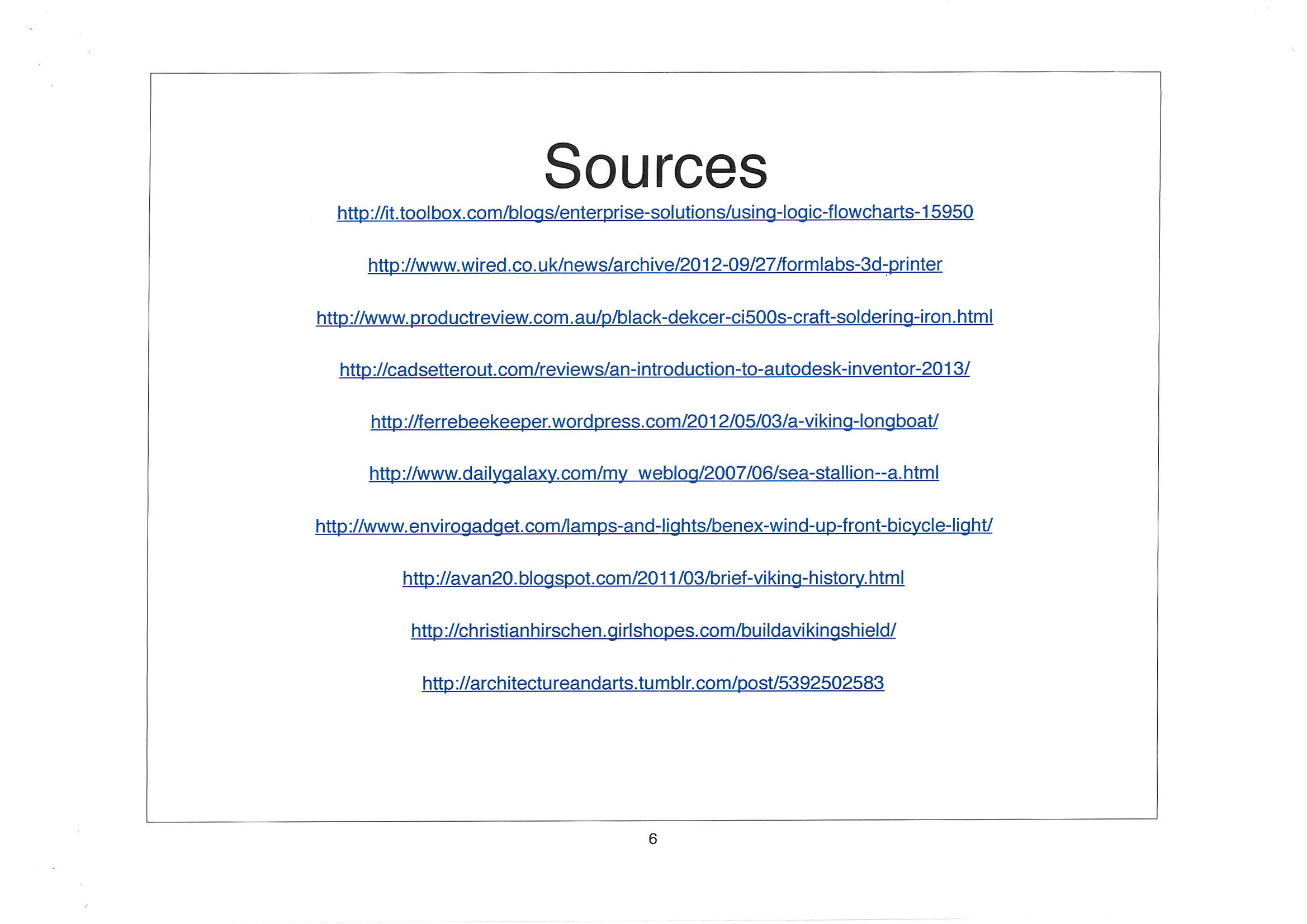 1
Annotation 1
1
Annotation 1
References websites used for investigations
-
Annotations
-
1
Annotation 1
References websites used for investigations
